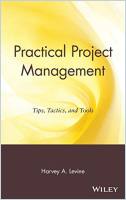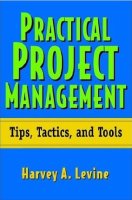Why did I choose this resource?
I chose this resource to learn more about project management and what it entails.
What did you learn from it?
I learned the different processes and procedures involved in project management as well as the different approached towards project management.
Key Knowledge
- Project Management Basics
- NO SHORTCUTS in project management
- Best Project Managers
- Adjust to transforming conditions
- Forcefully drive the project to completion
- Project Managers are assisted on every project by:
- Solid organizational framework
- Skills of personnel appointed to the project
- Work Breakdown Structure (WBS)
- Exactly and entirely classify the work involved in the project as a whole
- Break down the work into component tasks
- Properly manages
- time
- resources
- costs
- Planning and Control
- Initial project focus is on basic planning and control functions
- Workscope, time, resources, and costs
- Initial project focus is on basic planning and control functions
- The Planning Phase
- Initial planning
- Establish project objectives, define the work, determine the work timing, establish the resources, and establish the cost baseline
- Identify work packages and tasks using the WBS
- Determine a tentative schedule using the Critical Path Method (CPM)
- Assign resources using a resource aggregation histogram
- Amend original timeline into a resource-adjusted schedule
- Pause scheduling and determine cost rates for required resources
- Create a time-phased budget called a Cash Flow Plan (or Project Expenditure Plan) by applying the cost baseline to the resource-adjusted schedule
- Initial planning
- Setting the Baseline
- Identify possible problems by vigilantly reviewing the baseline schedule, resource loading plan, and budget
- Use Critical Path software to locate spots of concern
- Finalize a baseline plan and use it to gauge progress and costs
- Also contains milestones and trigger points
- The Tracking Phase
- Track work progress
- When a task is started and completed or what percentage has been completed to date
- Use information to perform a periodic Earned Value Analysis (multiply percentage of completed work by the budget)
- Budget Cost of Work Performed (BCWP) compared to the Budget Cost of Work Scheduled (BCWS) equals the Schedule Variance (SV)
- Give your progress in terms of time
- Actual Expenditures (ACWP) compared to the earned value (BCWP) equals the Cost Variance (CV)
- Budget Cost of Work Performed (BCWP) compared to the Budget Cost of Work Scheduled (BCWS) equals the Schedule Variance (SV)
- ALWAYS graph progress by comparing current data with the baseline plan
- Track work progress
- Project Management Organization
- The Functional Organization
- Traditional approach, focuses on operational discipline
- Routine work and consistent standards
- Traditional approach, focuses on operational discipline
- The Project Organization
- Organization is created with the sole purpose of accomplishing the project
- Setbacks include
- ineffective use of resources
- harmful effect on institutional memory due to no continuity of personnel
- The Matrix Organization
- Blends the functional and project methods
- At least two managers; functional manager and project manager
- Used by companies who are engaged in multiple and/or overlapping projects
- Combines benefits of project organization and institutional knowledge
- The Teams Organization
- Consists of a task forces or cross-functional team of specialists working full or part time on a project
- Project manager chosen by either the senior manager or the team
- May increase productivity, diminish cost, improve creativity, encourage strategic initiatives, and enhance project performance
- The Functional Organization
- Leadership and Methodology
- Central Project Management Office (CPO)
- Offers project leadership, skilled project managers, and other resources and technology
- Repository of project experience, models, and standards
- Organizes projects across a company, assists in resource management and allocation, and monitors how various projects relate to others occurring simultaneously in the organization
- MUST use a computer-based project management program
- Implementation Plan
- Directive from senior management; provides support for the project management process
- Procedures; define the implementation process
- Implementation Plan; shows the steps to follow and a schedule
- Kick-Off Program; make a big deal out of the implementation
- Central Project Management Office (CPO)
How are you using what you learned?
I am using what I learned to become more familiar with project management and be able to assist in project management responsibilities.
Key Changes / Key Actions
- Continue research on project management
- Evaluate our current project management processes and procedures
Source
- Name : Practical Project Management; Tips, Tactics, and Tools
- Author : Harvey A. Levine
- getAbstract.com: Link to Book


